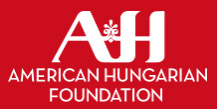William Penn Life, 2019 (54. évfolyam, 2-5. szám)
2019-03-01 / 3. szám
From the Pilvax Café, the crowd moved, while increasing in numbers, to the Länderer and Heckenast Print Shop to print both Petőfi's poem and the "12 Points." There, the crowd demanded the owner, Lajos Länderer, print these documents plus a small leaflet advertising a rally at the National Museum the next day. Soon, the leaders were distributing the first printed copies from the building's low windows to the crowds on the street. This is one example of why the beginning of the Revolution is sometimes referred to as bloodless: people gathered around the print shop building, distributing the poem and flyers, preparing for a revolution of ideas. What was it like to stand in this crowd of thousands of people, feeling the winds of change? The building that housed this famous print shop still stands at 3 Kossuth Lajos Street, but it now houses private apartments. The third building is the Hungarian National Museum, the site of the March 16th rally. Thousands were in the crowd at the recently completed museum. Petőfi allegedly climbed to the top of the main stairs outside to read his "National Song." Architect Mihály Pollack built this museum in Neoclassical style. It has grand columns and simple geometric forms that reflect Greek and Roman styles. The actual building has not changed much in 170 years and is one of the most recognizable locations of the Revolution. To this day, commemorative Revolution ceremonies take place here at 14-16 Múzeum Körút in Budapest. The museum, café and print shop were not the only locations linked to the Revolution. Other locations important to the events of March 1848 include Pest City Hall, the Habsburg Governing Council House (now home to the Hungarian Academy of Sciences), the Castle District prison and the National Theater. There were also a number of sites where decisive battles were fought outside Budapest. □ ABOVE: What once was home to a café where a revolution began now is home to several restaurants and shops. BELOW: By contrast, the National Museum (below) still looks much the same as it did when revolutionaries crowded its steps on March 16, I 848. WILLIAM PENN LIFE 0 March 2019 0 9
